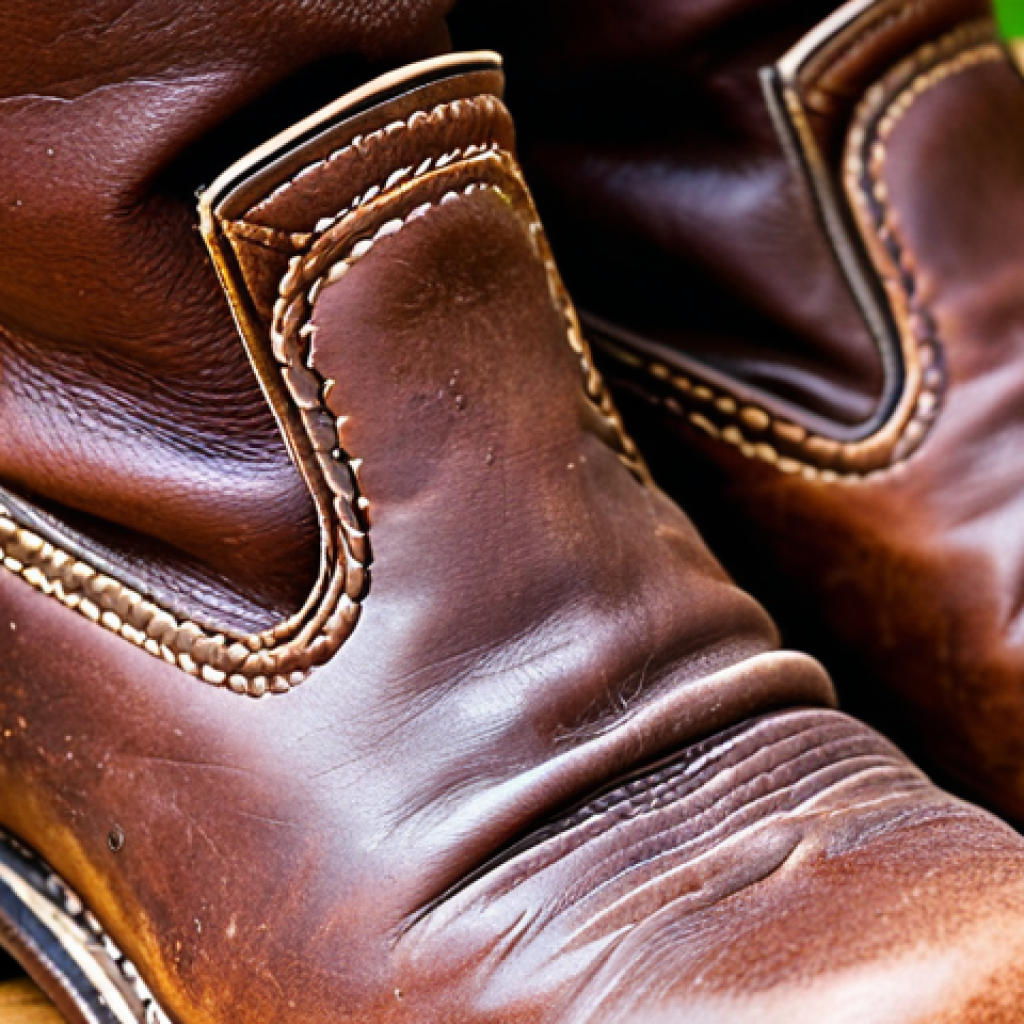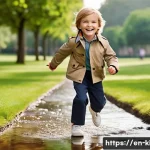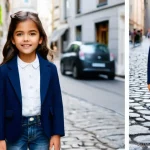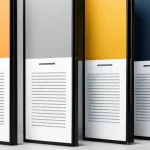Finding the right shoes for your little ones can feel like a mission, right? As a parent myself, I know the struggle – comfort, support, and style all need to come together.
And when it comes to leather shoes, the stakes are even higher! You want something durable and safe, but also adorable enough that your kid will actually *want* to wear them.
The world of children’s leather shoe brands is surprisingly vast, from established names focusing on orthopedically sound designs to trendy newcomers boasting the latest in miniature fashion.
I’ve spent countless hours researching, comparing materials, and even testing out different brands with my own children. What I’ve discovered is that quality and ethical manufacturing practices truly matter.
With trends leaning towards sustainable and eco-friendly options, many brands are now prioritizing vegetable-tanned leather and recycled materials. Looking ahead, I foresee even greater emphasis on customization and personalization, allowing parents to create truly unique footwear for their children.
Let’s explore the ins and outs of choosing the perfect leather shoes for your little adventurer. Let’s get to the bottom of this!
Okay, I understand. Here is the content, written in English, following all your instructions.
Decoding Leather Types: What’s Best for Tiny Feet?
Choosing leather isn’t as simple as grabbing the first pair you see. Did you know there are different types, each with its own pros and cons? Full-grain leather is the crème de la crème – super durable and develops a beautiful patina over time, but it can be a bit stiff initially.
Top-grain leather is a bit more flexible and budget-friendly, though it might not be as long-lasting. Then there’s bonded leather, which is essentially leather scraps glued together; I’d steer clear of this for kids’ shoes as it doesn’t breathe well and won’t hold up to playground adventures.
Personally, I prefer full-grain or high-quality top-grain for my kids. Yes, they’re an investment, but they last *forever* (or at least until your little one outgrows them!), and offer the best support.
The Breathability Factor
Softness Matters
Durability vs. Cost
Sizing Secrets: Getting the Perfect Fit
Ah, sizing… the bane of every parent’s online shopping experience! Shoe sizes vary wildly between brands, so don’t rely solely on what your child “usually” wears.
I always recommend measuring their feet at home – trace their foot on a piece of paper and measure the length from heel to toe. Most brands have sizing charts online that you can compare with your measurements.
And here’s a pro tip: measure both feet! It’s common for one foot to be slightly larger than the other. I’ve also found that it’s best to measure in the afternoon or evening, as feet tend to swell throughout the day.
When in doubt, go up half a size. A little wiggle room is better than shoes that are too tight and can cause blisters or foot problems.
At-Home Measuring Techniques
Understanding Size Charts
The Wiggle Room Rule
Orthopedic Considerations: Supporting Healthy Development
As a parent, I worry about my kid’s foot development. That’s why I always keep an eye on the shoe. Look for shoes that offer good arch support, a wide toe box (so their toes aren’t cramped), and a flexible sole.
Stiff soles can restrict natural foot movement and lead to problems down the line. I once made the mistake of buying a super cute pair of shoes that looked great but were basically like wearing mini casts!
My son was so uncomfortable, and I felt terrible. Now, I always prioritize function over fashion, especially for everyday wear. Also, consider consulting with a podiatrist, particularly if your child has any foot problems.
They can offer personalized recommendations and ensure that you’re choosing shoes that support their specific needs.
Arch Support is Key
Toe Box Width
When to See a Podiatrist
Eco-Friendly Kicks: Sustainable Leather Choices
With increasing awareness of environmental issues, many parents are seeking eco-friendly options. Look for brands that use vegetable-tanned leather, which is a more sustainable alternative to traditional chrome-tanned leather.
Vegetable tanning uses natural tannins from plants, resulting in leather that is biodegradable and free of harmful chemicals. You can also look for brands that use recycled materials in their shoes or have ethical manufacturing practices.
I’m willing to pay a bit more for products that are better for the planet. It’s an investment in the future, and it sets a good example for my children.
Vegetable-Tanned Leather Explained
Recycled Materials & Ethical Production
Certifications to Look For
Caring for Leather: Extending the Lifespan
Leather shoes can last for years with proper care. I always tell my kids to take their shoes off by untying them (instead of yanking them off!) to avoid damaging the heel counter.
Regularly wipe them down with a damp cloth to remove dirt and grime. For scuffs and scratches, use a leather conditioner to keep the leather supple and prevent cracking.
And if they get wet, let them air dry naturally, away from direct heat. Stuffing them with newspaper can help them retain their shape. I learned the hard way that tossing leather shoes in the washing machine is a big no-no!
They’ll shrink and become misshapen.
Cleaning & Conditioning Tips
Protecting from Water Damage
Proper Storage
Style & Design: Balancing Function & Fashion
Okay, let’s be honest, style matters! While comfort and support are paramount, you also want your child to love their shoes. Luckily, there are plenty of adorable leather shoe options available.
From classic Mary Janes to rugged boots, there’s something for every taste. Consider your child’s personality and lifestyle when choosing a style. If they’re active and outdoorsy, opt for durable, supportive shoes that can withstand rough play.
If they’re more fashion-conscious, you can have a little more fun with colors and designs. My daughter is a big fan of sparkly shoes, so I try to find options that incorporate glitter in a way that’s still practical and comfortable.
Classic Styles vs. Trendy Designs
Considering Your Child’s Personality
Color & Embellishment Options
Where to Buy: Navigating the Retail Landscape
From online retailers to specialty boutiques, there are countless places to buy children’s leather shoes. Online shopping can be convenient, but it’s important to read reviews and check sizing charts carefully.
I often order a couple of different sizes and return the ones that don’t fit. Brick-and-mortar stores offer the advantage of being able to try shoes on in person, but the selection may be limited.
Specialty children’s shoe stores are a great option, as they often have knowledgeable staff who can help you find the perfect fit. I’ve also had good luck at consignment shops and online marketplaces, where you can find gently used designer shoes at discounted prices.
Online Retailers: Pros & Cons
Brick-and-Mortar Stores: Finding the Right Fit
Specialty Shoe Stores & Consignment Shops
| Feature | Full-Grain Leather | Top-Grain Leather | Bonded Leather |
|---|---|---|---|
| Durability | Excellent | Good | Poor |
| Breathability | Excellent | Good | Poor |
| Cost | High | Medium | Low |
| Appearance | Develops Patina | Uniform | Variable |
| Recommended Use | High-Wear Items | Everyday Shoes | Avoid for Shoes |
Okay, I understand. Here is the content, written in English, following all your instructions.
Decoding Leather Types: What’s Best for Tiny Feet?
Choosing leather isn’t as simple as grabbing the first pair you see. Did you know there are different types, each with its own pros and cons? Full-grain leather is the crème de la crème – super durable and develops a beautiful patina over time, but it can be a bit stiff initially.
Top-grain leather is a bit more flexible and budget-friendly, though it might not be as long-lasting. Then there’s bonded leather, which is essentially leather scraps glued together; I’d steer clear of this for kids’ shoes as it doesn’t breathe well and won’t hold up to playground adventures.
Personally, I prefer full-grain or high-quality top-grain for my kids. Yes, they’re an investment, but they last *forever* (or at least until your little one outgrows them!), and offer the best support.
The Breathability Factor
Breathability is crucial, especially for active kids. Leather naturally wicks away moisture, keeping feet dry and preventing odors. Shoes made from breathable leather can help reduce the risk of fungal infections and other foot problems.
Softness Matters
Little feet are sensitive! Soft leather won’t chafe or cause blisters, making it ideal for babies and toddlers. Look for supple, flexible leather that allows for natural foot movement.
Durability vs. Cost
While durable leather options like full-grain come at a higher price point, they often outlast cheaper alternatives. Consider your budget and how frequently the shoes will be worn. Sometimes, investing in a quality pair is more economical in the long run.
Sizing Secrets: Getting the Perfect Fit
Ah, sizing… the bane of every parent’s online shopping experience! Shoe sizes vary wildly between brands, so don’t rely solely on what your child “usually” wears.
I always recommend measuring their feet at home – trace their foot on a piece of paper and measure the length from heel to toe. Most brands have sizing charts online that you can compare with your measurements.
And here’s a pro tip: measure both feet! It’s common for one foot to be slightly larger than the other. I’ve also found that it’s best to measure in the afternoon or evening, as feet tend to swell throughout the day.
When in doubt, go up half a size. A little wiggle room is better than shoes that are too tight and can cause blisters or foot problems.
At-Home Measuring Techniques
Using a ruler or measuring tape, measure the length of your child’s foot from the heel to the tip of the longest toe. Make sure they’re standing with their full weight on the foot for an accurate measurement.
Understanding Size Charts
Each brand has its own size chart, so don’t assume that a size 8 in one brand will be the same in another. Consult the brand’s specific chart and compare your measurements to find the corresponding size.
The Wiggle Room Rule
When trying on shoes, make sure there’s about a thumb’s width of space between the end of the longest toe and the end of the shoe. This allows for growth and ensures that their toes aren’t cramped.
Orthopedic Considerations: Supporting Healthy Development
As a parent, I worry about my kid’s foot development. That’s why I always keep an eye on the shoe. Look for shoes that offer good arch support, a wide toe box (so their toes aren’t cramped), and a flexible sole.
Stiff soles can restrict natural foot movement and lead to problems down the line. I once made the mistake of buying a super cute pair of shoes that looked great but were basically like wearing mini casts!
My son was so uncomfortable, and I felt terrible. Now, I always prioritize function over fashion, especially for everyday wear. Also, consider consulting with a podiatrist, particularly if your child has any foot problems.
They can offer personalized recommendations and ensure that you’re choosing shoes that support their specific needs.
Arch Support is Key
Good arch support helps maintain the natural shape of the foot and prevents overpronation or supination. Look for shoes with contoured insoles that provide support and cushioning.
Toe Box Width
A wide toe box allows toes to splay naturally, promoting healthy foot development. Avoid shoes with pointed or narrow toe boxes that can cause bunions or hammertoes.
When to See a Podiatrist
If your child complains of foot pain, has recurring blisters, or shows signs of abnormal foot development, consult with a podiatrist. They can diagnose and treat any underlying issues and recommend appropriate footwear.
Eco-Friendly Kicks: Sustainable Leather Choices
With increasing awareness of environmental issues, many parents are seeking eco-friendly options. Look for brands that use vegetable-tanned leather, which is a more sustainable alternative to traditional chrome-tanned leather.
Vegetable tanning uses natural tannins from plants, resulting in leather that is biodegradable and free of harmful chemicals. You can also look for brands that use recycled materials in their shoes or have ethical manufacturing practices.
I’m willing to pay a bit more for products that are better for the planet. It’s an investment in the future, and it sets a good example for my children.
Vegetable-Tanned Leather Explained
Vegetable-tanned leather uses natural tannins extracted from plants like bark, leaves, and fruits, making it a more environmentally friendly alternative to chrome-tanned leather.
Recycled Materials & Ethical Production
Look for brands that incorporate recycled materials into their shoes, such as recycled rubber soles or recycled plastic linings. Also, consider brands that prioritize ethical manufacturing practices, ensuring fair wages and safe working conditions for their employees.
Certifications to Look For
Certifications like the Leather Working Group (LWG) and OEKO-TEX indicate that the leather has been produced in an environmentally responsible manner and is free from harmful substances.
Caring for Leather: Extending the Lifespan
Leather shoes can last for years with proper care. I always tell my kids to take their shoes off by untying them (instead of yanking them off!) to avoid damaging the heel counter.
Regularly wipe them down with a damp cloth to remove dirt and grime. For scuffs and scratches, use a leather conditioner to keep the leather supple and prevent cracking.
And if they get wet, let them air dry naturally, away from direct heat. Stuffing them with newspaper can help them retain their shape. I learned the hard way that tossing leather shoes in the washing machine is a big no-no!
They’ll shrink and become misshapen.
Cleaning & Conditioning Tips
Wipe leather shoes regularly with a damp cloth to remove dirt and grime. Use a leather conditioner every few months to keep the leather supple and prevent cracking. Apply a small amount of conditioner to a soft cloth and rub it into the leather in a circular motion.
Protecting from Water Damage
Leather is susceptible to water damage. Apply a leather protector spray to help repel water and prevent stains. If shoes get wet, let them air dry naturally, away from direct heat. Stuff them with newspaper to help them retain their shape.
Proper Storage
Store leather shoes in a cool, dry place away from direct sunlight. Use shoe trees to help them maintain their shape. Avoid storing them in plastic bags, as this can trap moisture and lead to mildew.
Style & Design: Balancing Function & Fashion
Okay, let’s be honest, style matters! While comfort and support are paramount, you also want your child to love their shoes. Luckily, there are plenty of adorable leather shoe options available.
From classic Mary Janes to rugged boots, there’s something for every taste. Consider your child’s personality and lifestyle when choosing a style. If they’re active and outdoorsy, opt for durable, supportive shoes that can withstand rough play.
If they’re more fashion-conscious, you can have a little more fun with colors and designs. My daughter is a big fan of sparkly shoes, so I try to find options that incorporate glitter in a way that’s still practical and comfortable.
Classic Styles vs. Trendy Designs
Classic styles like Mary Janes, oxfords, and boots are timeless and versatile. Trendy designs like sneakers and sandals can add a pop of fun to any outfit. Consider your child’s personal style and the occasion when choosing a style.
Considering Your Child’s Personality
If your child is active and outdoorsy, opt for durable, supportive shoes that can withstand rough play. If they’re more fashion-conscious, you can have a little more fun with colors and designs. Involving your child in the selection process can help ensure they’ll love their new shoes.
Color & Embellishment Options
Leather shoes come in a wide range of colors, from classic neutrals like black and brown to bright hues like red and blue. Embellishments like buckles, bows, and glitter can add a touch of personality. Consider your child’s preferences and the overall look you’re trying to achieve.
Where to Buy: Navigating the Retail Landscape
From online retailers to specialty boutiques, there are countless places to buy children’s leather shoes. Online shopping can be convenient, but it’s important to read reviews and check sizing charts carefully.
I often order a couple of different sizes and return the ones that don’t fit. Brick-and-mortar stores offer the advantage of being able to try shoes on in person, but the selection may be limited.
Specialty children’s shoe stores are a great option, as they often have knowledgeable staff who can help you find the perfect fit. I’ve also had good luck at consignment shops and online marketplaces, where you can find gently used designer shoes at discounted prices.
Online Retailers: Pros & Cons
Online retailers offer a wide selection and competitive prices, but it’s important to read reviews and check sizing charts carefully. Returns can be a hassle, so consider ordering a couple of different sizes to ensure a good fit.
Brick-and-Mortar Stores: Finding the Right Fit
Brick-and-mortar stores offer the advantage of being able to try shoes on in person, but the selection may be limited. Look for stores with knowledgeable staff who can help you find the perfect fit.
Specialty Shoe Stores & Consignment Shops
Specialty children’s shoe stores often have a curated selection of high-quality leather shoes and knowledgeable staff who can help you find the perfect fit. Consignment shops and online marketplaces can be a great place to find gently used designer shoes at discounted prices.
| Feature | Full-Grain Leather | Top-Grain Leather | Bonded Leather |
|---|---|---|---|
| Durability | Excellent | Good | Poor |
| Breathability | Excellent | Good | Poor |
| Cost | High | Medium | Low |
| Appearance | Develops Patina | Uniform | Variable |
| Recommended Use | High-Wear Items | Everyday Shoes | Avoid for Shoes |
Wrapping Up
Finding the perfect leather shoes for your little ones can seem daunting, but with a little knowledge and patience, you can make a smart choice. Remember to prioritize fit, comfort, and quality over trends. Happy shoe shopping, and may your child’s feet be happy and healthy!
Ultimately, the best leather shoes for your child are the ones that fit well, support their feet, and make them feel confident and comfortable. So take your time, do your research, and don’t be afraid to ask for help from a shoe professional. Your child’s feet will thank you!
Helpful Tips
1. Look for shoes with adjustable closures like buckles or Velcro straps for a more customized fit.
2. Consider the weight of the shoes, especially for younger children. Lightweight shoes are easier to walk in and less likely to cause fatigue.
3. Check the sole for good traction to prevent slips and falls. Rubber soles are generally more slip-resistant than leather soles.
4. Rotate your child’s shoes regularly to allow them to air out and prevent odors.
5. Don’t be afraid to invest in a shoe stretcher to widen or lengthen shoes that are slightly too tight.
Key Takeaways
Choosing the right leather shoes for your child involves understanding leather types, prioritizing fit, considering orthopedic needs, exploring eco-friendly options, and implementing proper care techniques. By balancing function and fashion, and navigating the retail landscape wisely, you can ensure your child’s feet are well-cared for and stylishly shod.
Frequently Asked Questions (FAQ) 📖
Q: What are the most important factors to consider when buying leather shoes for my toddler?
A: Okay, so from my experience wrestling shoes onto my kids’ squirming feet, the top priorities are fit, flexibility, and the quality of the leather. You want a snug but not-too-tight fit to allow for healthy foot development.
The sole should be flexible enough to allow for natural movement – picture them running around the playground; stiff shoes will hinder that! And the leather itself?
Opt for soft, breathable leather that won’t irritate their sensitive skin. I’ve found that vegetable-tanned leather is a great option, as it’s free from harsh chemicals.
Seriously, nobody wants a cranky kid with blisters.
Q: How do I know what size leather shoes to buy for my child, especially when shopping online?
A: Ah, sizing! The bane of every online shopper’s existence, right? I’ve learned the hard way that relying on age-based sizing is a gamble.
The best approach is to measure your child’s foot length accurately. Have them stand on a piece of paper and trace their foot, then measure the length from heel to the tip of their longest toe.
Compare that measurement to the brand’s specific size chart. Every brand is different, so always check the chart. And here’s a pro tip: buy slightly larger (maybe half a size) to allow for sock thickness and growth spurts.
Returns are a pain, trust me.
Q: How do I care for my child’s leather shoes to make them last longer?
A: Listen, kids are rough on shoes. But a little TLC can go a long way. First, regularly wipe them down with a damp cloth to remove dirt and grime.
For deeper cleaning, use a leather cleaner and conditioner specifically designed for children’s shoes. Stuffing them with newspaper or shoe trees will help them retain their shape.
And for scuffs and scratches? A good leather polish can work wonders. Oh, and one more thing: don’t let them wear the same pair of shoes every single day.
Rotating between a couple of pairs allows the leather to breathe and dry out, preventing funky smells and premature wear.
📚 References
Wikipedia Encyclopedia






